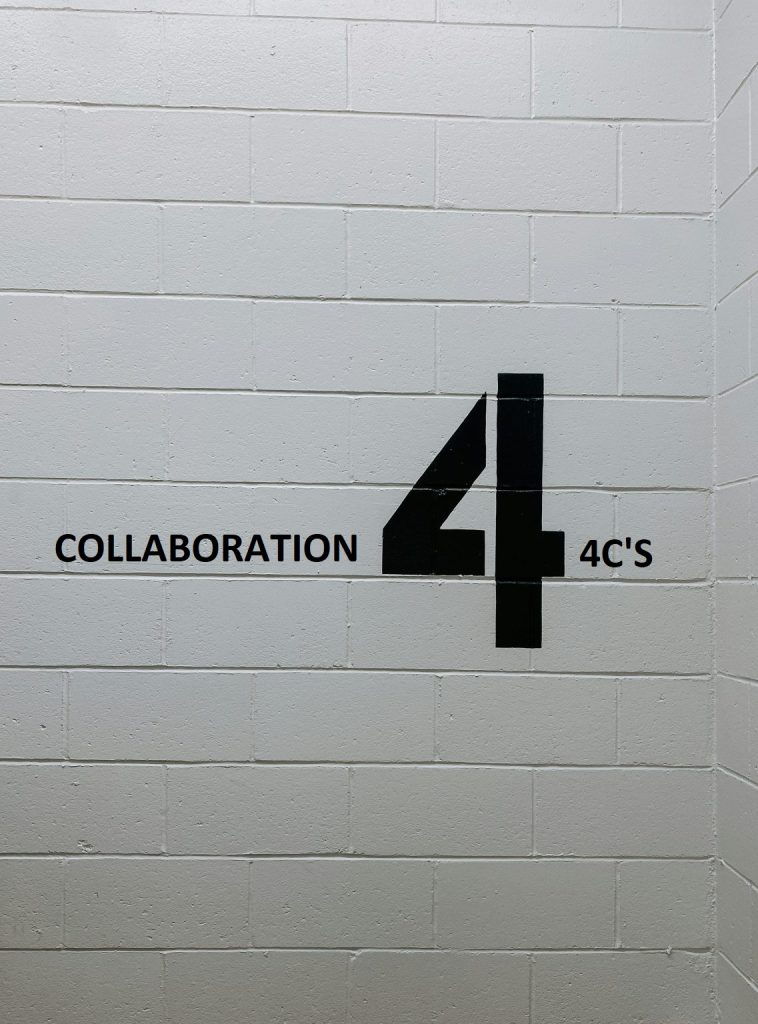
Listen to this Blog Post:
In a previous blog post and podcast entitled, The New Paradigm of the 4 Cs, I introduced the 4 C’s of (1) Connection; (2) Cooperation; (3) Collaboration; and (4) Co-Creation, that are the new world paradigm for building meaningful personal and business relationships that shape the present and the future.
Then I discussed the first concept of the 4C’s, Connection in another blog post and podcast.
Next, I discussed the second concept of the 4C’s, Cooperation in another blog post and podcast.
In this blog post and podcast, we go deeper on the third concept of the 4C’s, Collaboration.
Collaboration goes far beyond cooperation.
Collaboration sparks the creativity.
While cooperation aligns efforts, collaboration combines individual strengths to produce something new.
It is synergy, where the whole, the collaboration end product becomes greater than the sum of its parts.
Original Characteristics of Collaboration:
- Diversity of Strengths: Different skill sets and diverse points of view, fuel innovation.
- Shared Vision: Creating a working vision for a common set of goals and outcomes.
- Creativity in Action: Engaging in creativity, brainstorming, problem-solving, and inventing together.
- Mutual Accountability: Holding each other responsible and accountable for all actions.
If we look at the concept of Collaboration from a deeper viewpoint, we can add these additional characteristics to the concept of Collaboration.
- Open Communication: We thrive when information flows freely. Transparency, active listening and the willingness to express ideas or concerns without fear foster trust and deepen the collaborative process.
- A Safe Container to Participate: True collaboration requires an environment where participants feel safe to take risks, make mistakes and offer unconventional ideas. When people feel valued and respected, they contribute more authentically and creatively.
- Adaptive Flexibility: Collaboration isn’t linear. The ability to adjust roles, approaches and strategies as new insights emerge allows you the flexibility to optimize outcomes and respond to unexpected challenges constructively.
- Shared Empowerment: Collaboration is amplified when every participant feels empowered to contribute their unique decisions perspective and talents. This means distributing decision-making authority, encouraging initiative and ensuring each voice meaningfully influences the shared outcome. Empowered collaborators bring more energy, ownership, and commitment to the process.
Collaboration is where dynamics take shape as purposeful, creative action. It is the space where diverse strengths meet shared intention.
With Collaboration, differences become assets rather than sources of friction. This transparency encourages real dialogue, where listening is as important as speaking. Collaboration allows for deeper understanding of goals, values and motivations that guide the collaborative effort.
Collaboration is a bridge between the relational groundwork of the first two Cs and the transformative potential of Co-Creation. It is where the synergy formed through authentic connection and cooperative alignment is activated into tangible progress.
How can you practice the concept of Collaboration in your own life?
Practical Ways to Practice Collaboration:
- Practice the Elements of Collaboration: The elements of collaboration include patience, communication, listening, compromise, intuition, creativity, problem solving and emotional intelligence. Treat each experience as a chance to refine these qualities, making collaboration not just something you do, but something that shapes who you are.
- Align on Shared Intentions Before Acting: To practice collaboration, take a moment with the people you are collaborating with to clarify what you are going to do and why you’re doing it and discuss what success looks like. When intentions are mutually defined and aligned, collaboration becomes smoother, conflicts diminish and everyone moves forward with greater clarity and unity.
- Invite Diverse Perspectives: Whether you’re working on a creative project, making a personal decision, or tackling a challenge, actively seek out input from people with diverse and different strengths, backgrounds, and viewpoints. Collaboration begins when you recognize that others can see things you can’t and that their insight enriches your path forward.
- Empower Others in Meaningful Ways: Look for opportunities to lift others up. Ask for their perspectives. Acknowledge their contributions. Encourage them to take initiative and be responsible Empowerment is reciprocal: the more you empower others, the more empowered you become and the richer the collaborative environment becomes for everyone involved.
- Engage in Reflective Check-Ins: Make time for intentional and reflective check-ins with the people you collaborate with, whether in your personal life or professional projects. Ask questions like: What’s working well? What needs adjustment? How can we support each other better? These reflective moments strengthen relationships, improve outcomes, create confidence and reinforce the collaborative bond over time.
Within the New Paradigm of the 4 Cs, Collaboration, is not merely about working together, it is about unlocking collective brilliance, elevating individual contributions and preparing the conditions where co-creation becomes not only possible, but inevitable.
Experiencing, acknowledging and embracing Collaboration creates a positive impact in your own life and in the lives of those you collaborate with.
Out There on the Edge of Everything®…
Stephen Lesavich, PhD
Copyright © 2025 by Stephen Lesavich, PhD. All rights reserved.
Certified solution-focused life coach and experienced business coach.
#four #fourCs #connection #coopertion #collaboration #co-creation #cocreation
#business #businesscoach #life #lifecoach #lesavich
![]()








Add comment